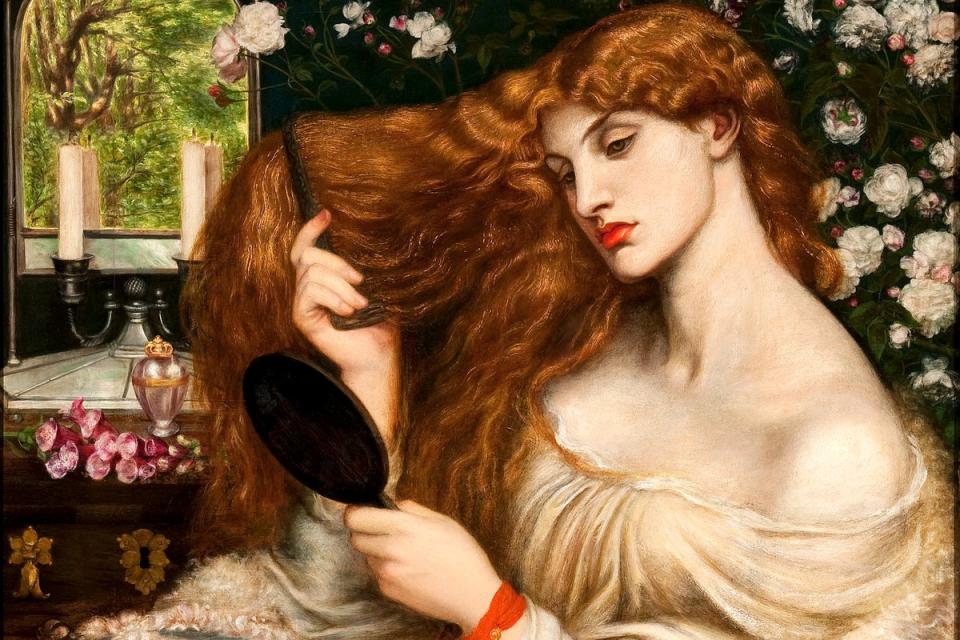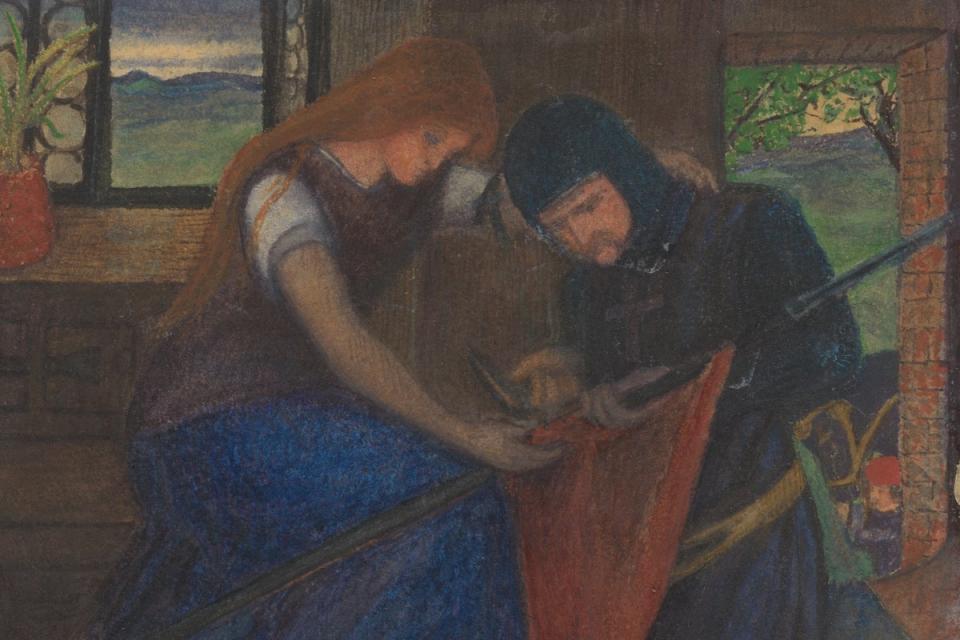The Rossettis at Tate Britain review: a hothouse of sensuousness and big hair

The Pre-Raphaelite Brotherhood had sisters, you know, and at this exhibition on the Rossettis, you don’t just get the famous poet, Christina, but works by Elizabeth Siddal who married Dante Gabriel Rossetti. So as well as the normal run of Pre-Raphaelite paintings – and if bee-stung lips, voluminous hair and languor are your thing, look no further – there’s lots of poetry on the walls.
Boy, it was a weird family. There were, in fact, four siblings, but William and Maria don’t really count. The father was a political exile from Italy. The children were precocious artists and poets, with Christina featuring in her brother’s works, most strikingly as a shrinking Virgin Mary in a novel take on the Annunciation.
She worked charitably with former prostitutes (she was a committed Anglican); her brother painted girls on the street –quite literally in Found, his picture of an honest yeoman who comes to London only to find his former girlfriend crouching on the pavement by Westminster Bridge. Sentiment, story and moral: all there.
DGR had a stock cast of types – from his Italian poet namesake Dante, from Goethe’s Faust (the mad girlfriend) and Edgar Allen Poe. Think medieval and manic, punctuated with exalted religious sentiment. Between him and others in the circle (notably Holman Hunt and Millais) there was a marked similarity: same faces, gestures, subjects.
It was a flight from Victorian industrialism and urbanism, but it was repetitive, though there are some vivid early sketches from real life. What would have been useful would have been a fuller explanation of the Pre-Raphaelite project, and of the Aestheticism which followed. Instead we get some nice wallpaper.

This being the Tate, we are treated to stern views on empire and orientalism, especially in the context of The Beloved, DGR’s take on the Song of Songs, with, oddly, a white-skinned bride. And yet the sketches in the same room of a beautiful black youth who appears in the foreground of the picture, and of other black and mixed race children, are exquisite.
The home life of Dante Gabriel anticipated the Bloomsbury Group. He married Siddal, a former milliner, who was no mean artist – there are some pleasing pencil and ink drawings – if not quite the genius that is suggested in this exhibition. He had a liaison with Fanny Cornforth, another model, too and, after Elizabeth’s death, with William Morris’s wife Jane. There are 13 photographs of Jane here, where she looks as Pre-Raphaelite as her pictures.
Physically they were all of a type, and in pictures like Lilith, the Siren or Joan of Arc, their voluptuous attributes are almost hallucinogenic. Talking of which, there’s an interesting note here on the mental illness that afflicted Dante Gabriel, Christina and Elizabeth, as well as the ubiquity of opioids and DGR’s dependence on chloral for his last decade. It explains a lot.
There are splendid loans here from Delaware and private collections, which make a visit worthwhile. But you come out of this show reeling from a hothouse surfeit of sensuousness and big hair.
Tate Britain, to September 24; tate.org.uk

 Yahoo Finance
Yahoo Finance 